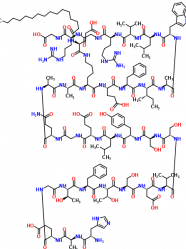Antidiabetic Effects of Liraglutide in Adolescents and Young Subjects with Type 1 Diabetes

ClinicalTrials.gov Identifier: NCT01722227
People who have type 1 diabetes have very few drug therapy options outside of insulin that have sustained benefits. GLP-1 agonists (Victoza, Byetta, Bydureon) are currently only FDA approved for patients with type 2 diabetes, but initial studies have shown that they may also help type 1 patients (see our diaTribe test drive on using Victoza for type 1 diabetes). The drugs act by increasing beta-cell secretion of insulin depending on the amount of glucose in the blood, but they also have other effects such as delaying gastric emptying and preventing the secretion of glucagon. Many patients also lose weight while using GLP-1 agonists. These other benefits may be of clinical relevance to patients with type 1 diabetes, and Kaleida Health is currently investigating GLP-1 agonists for adolescents in a phase 3 study. While these benefits may be extremely useful for some patients, we do caution readers that negative side effects include initial transient nausea, and in rare cases, pancreatitis.
In the clinical trial, patients will take a once-daily injection of Victoza (Novo Nordisk’s liraglutide) or a placebo, and monitor their blood glucose levels with a CGM. The study will last for three months and the researchers will track patients’ mean weekly blood glucose concentrations and A1cs. The researchers are looking for participants who are 15-30 years of age, using an insulin pump, have an A1c of 9.0% or less, and are willing to use a CGM. The exclusion criteria include previous use of Victoza, pregnant or breastfeeding mothers, adolescents or young adults who are underweight, as well as others detailed here. Kaleida Health is holding the study in Williamsville, New York. If you are interested, please contact Jeanne Hejna or Sonja Williams at 716-626-7998. We eagerly anticipate this study’s results and hope that a label expansion will occur for GLP-1 agonists. –MN
Comparison of a New Formulation of Insulin Glargine with Lantus in Patients with Type 2 Diabetes on Non-Insulin Antidiabetic Therapy (EDITION III)
ClinicalTrials.gov Identifier: NCT01676220
Sanofi’s Lantus (insulin glargine) is currently the market leading basal insulin used by patients with diabetes. The company had previously announced its plans for a new formulation of Lantus (see new now next in diaTribe #38) and is currently testing that new formulation against Lantus in a phase 3 clinical trial with type 2 patients. The newer formulation reportedly has a more stable profile and a smaller injection volume. Participants will either take the existing Lantus or the new formulation in addition to the non-insulin drugs they are already taking. Researchers will track changes in A1c, hypoglycemia, fasting plasma glucose levels, and eight-point plasma glucose profiles. The study will last for about 54 weeks with a six-month period to investigate the comparative efficacy and safety of the new formulation, and then an additional six months to continue evaluating the safety of the new insulin glargine against Lantus. In order to enroll in the trial, patients must be over 18 years old, have type 2 diabetes that is inadequately controlled with non-insulin antihyperglycemic drugs (metformin, GLP-1 agonists, DPP-4 inhibitors), an A1c between 7.0% and 11.0%, and other criteria that can be found on the trial’s website here. This study will occur at 80 locations throughout the US including Arizona, California, Florida, Illinois, Louisiana, Maryland, Massachusetts, Texas, and 21 other states. If you are interested in participating, please contact Sanofi at Contact-Us@sanofi.com. –MN







